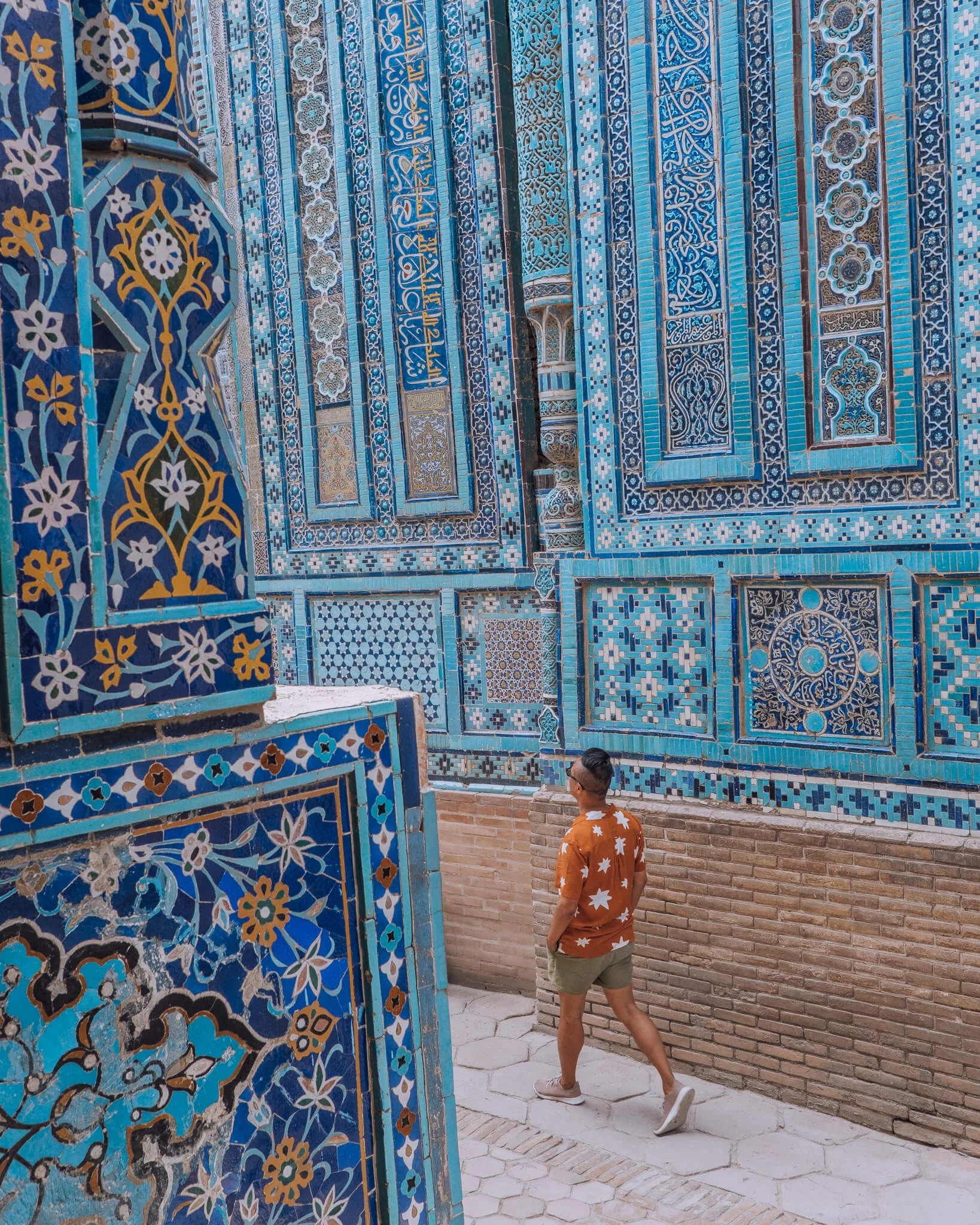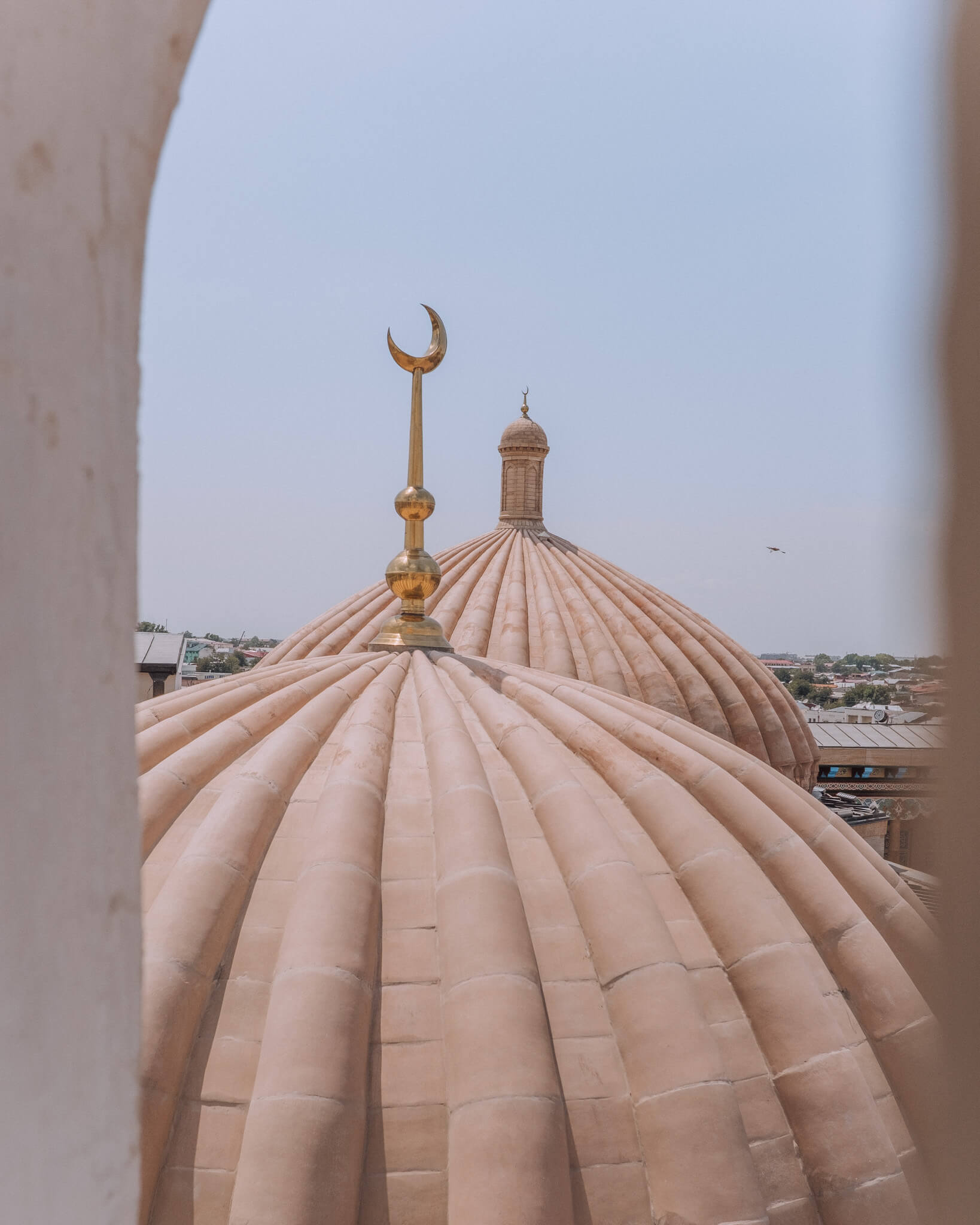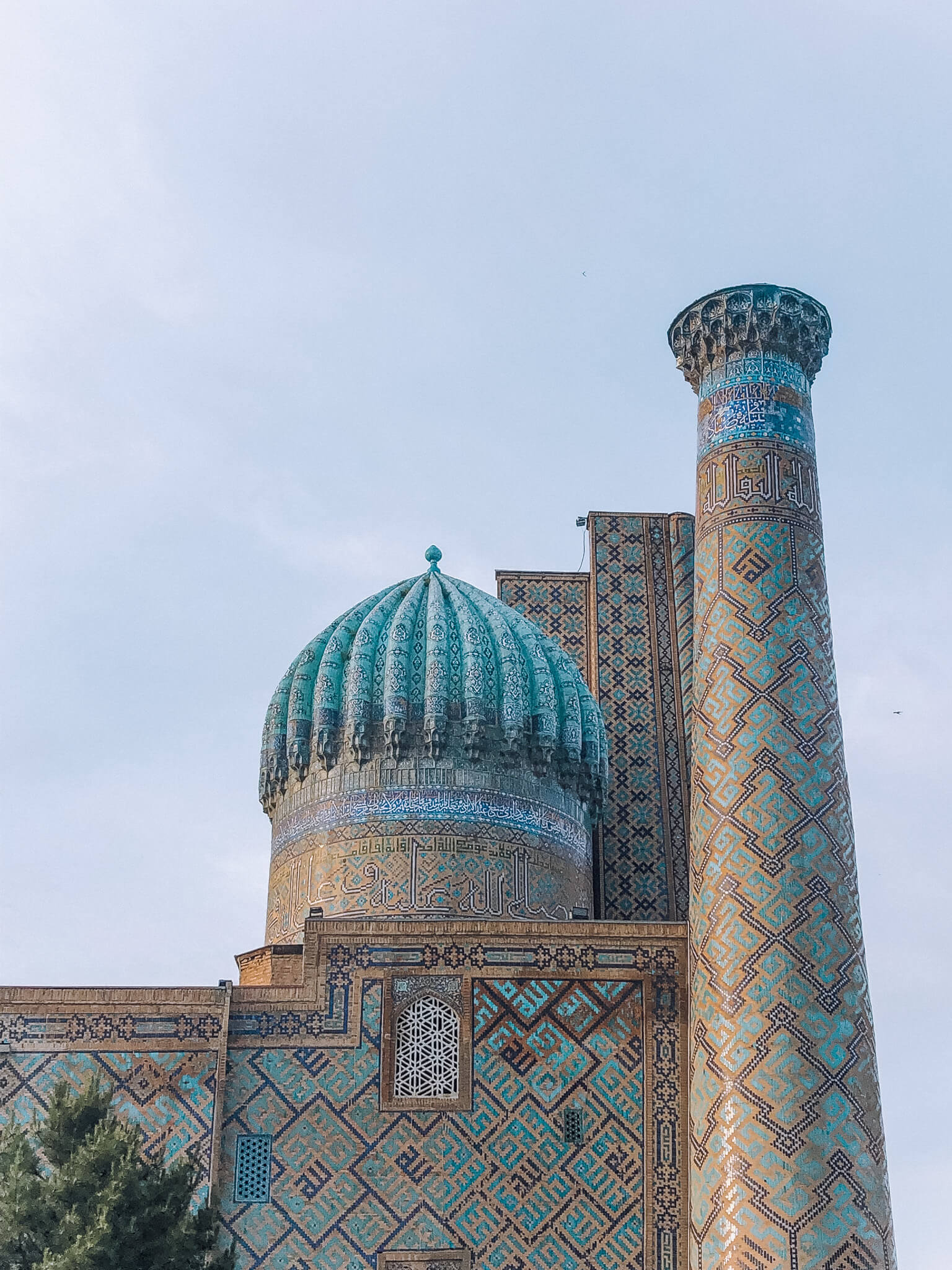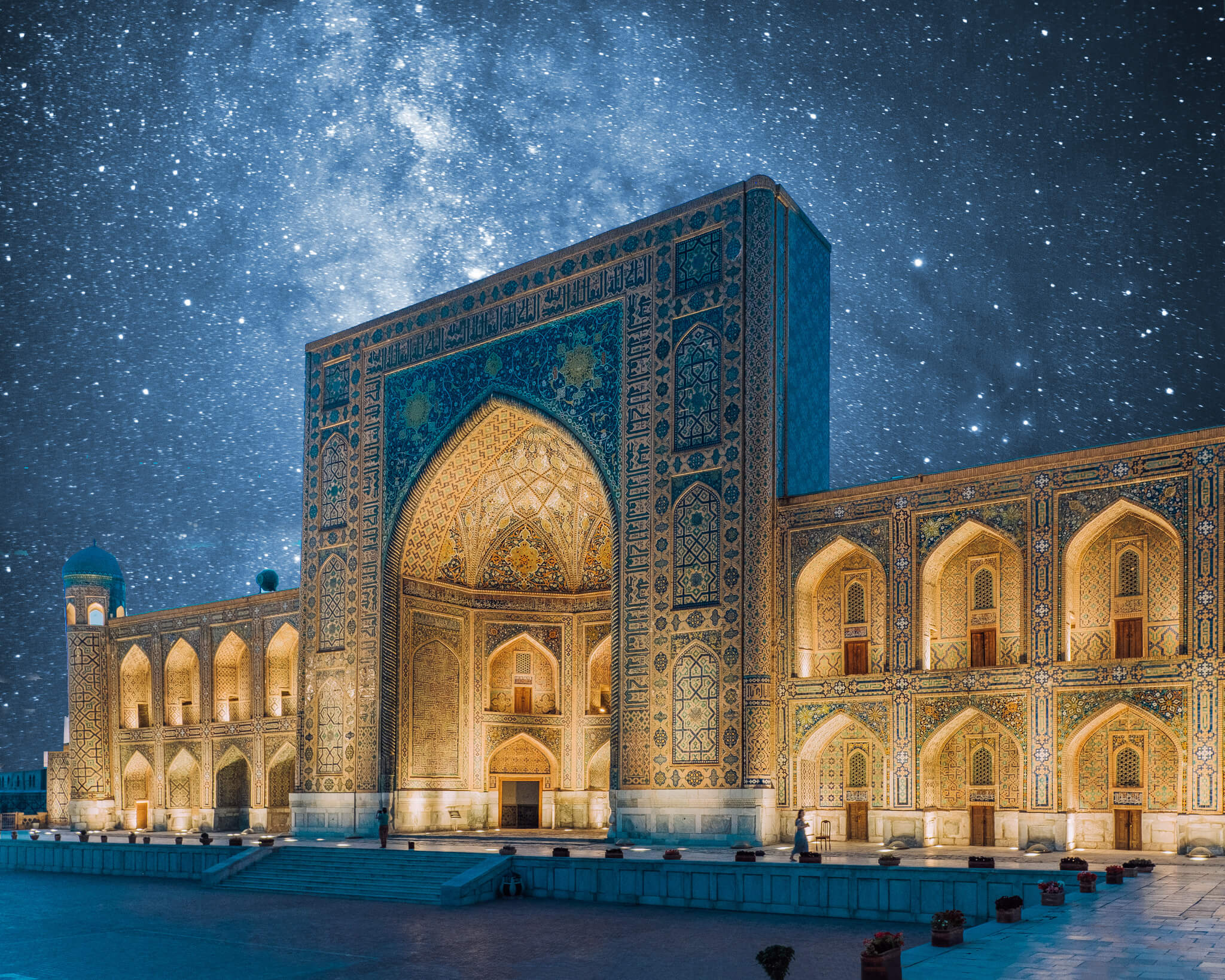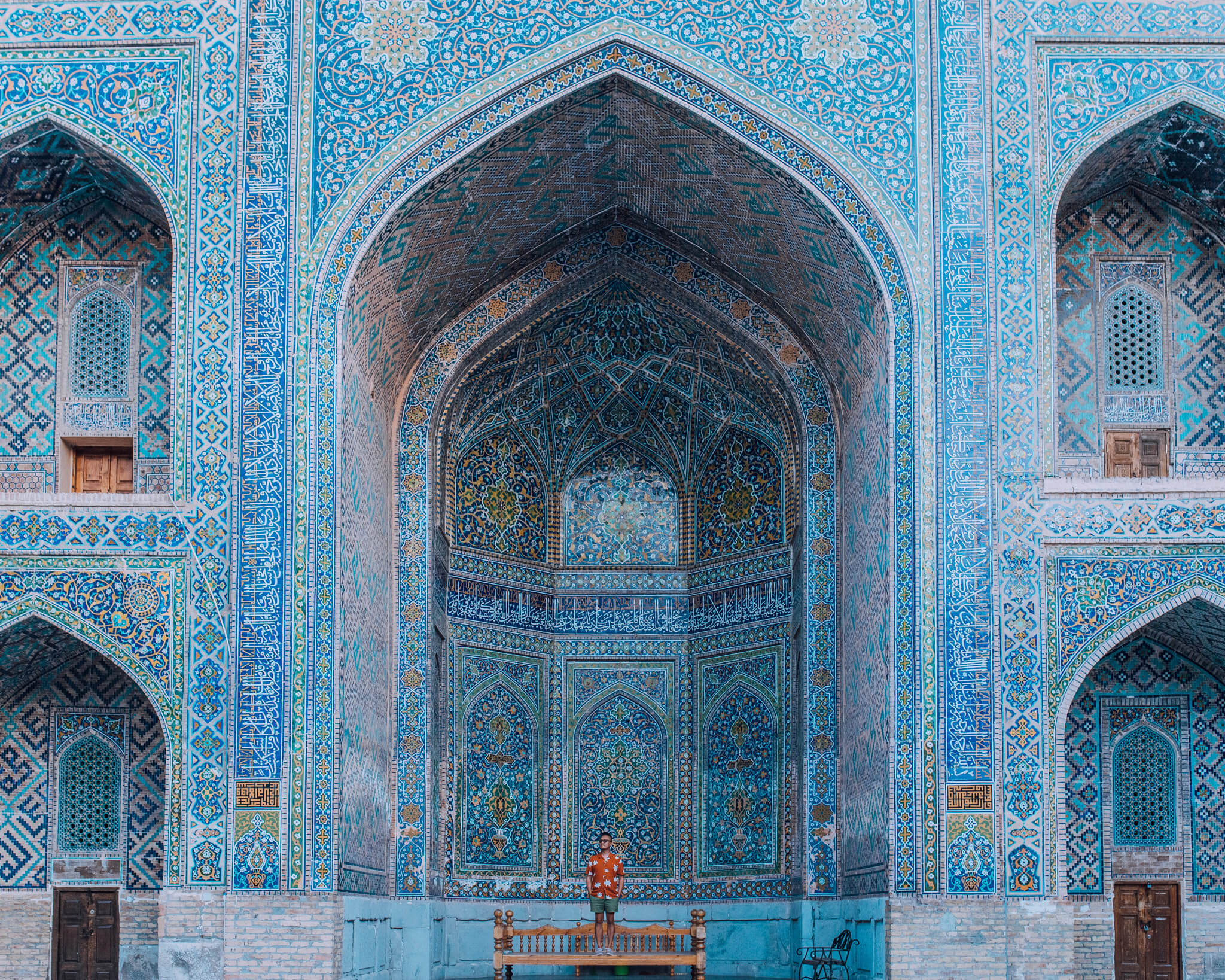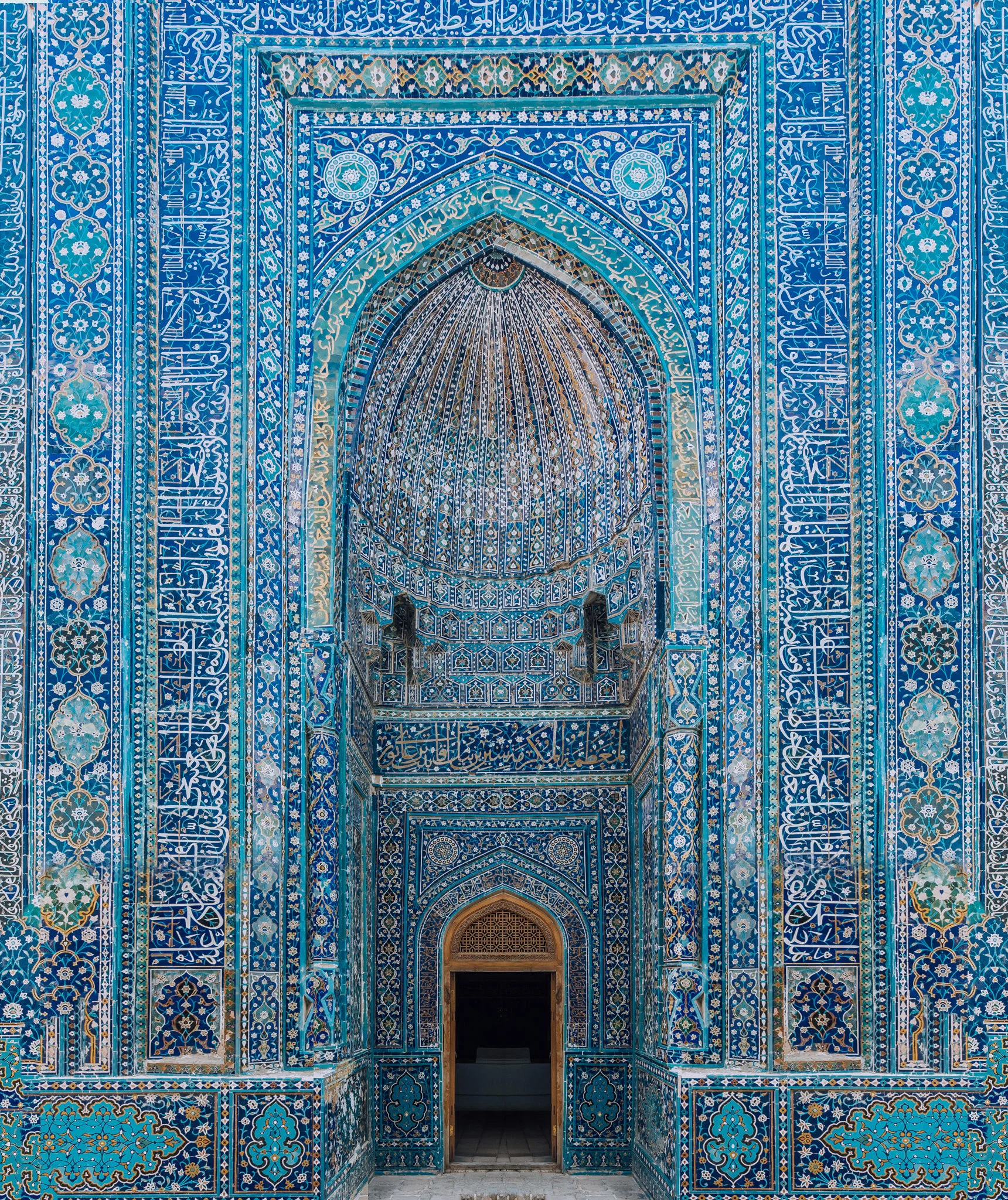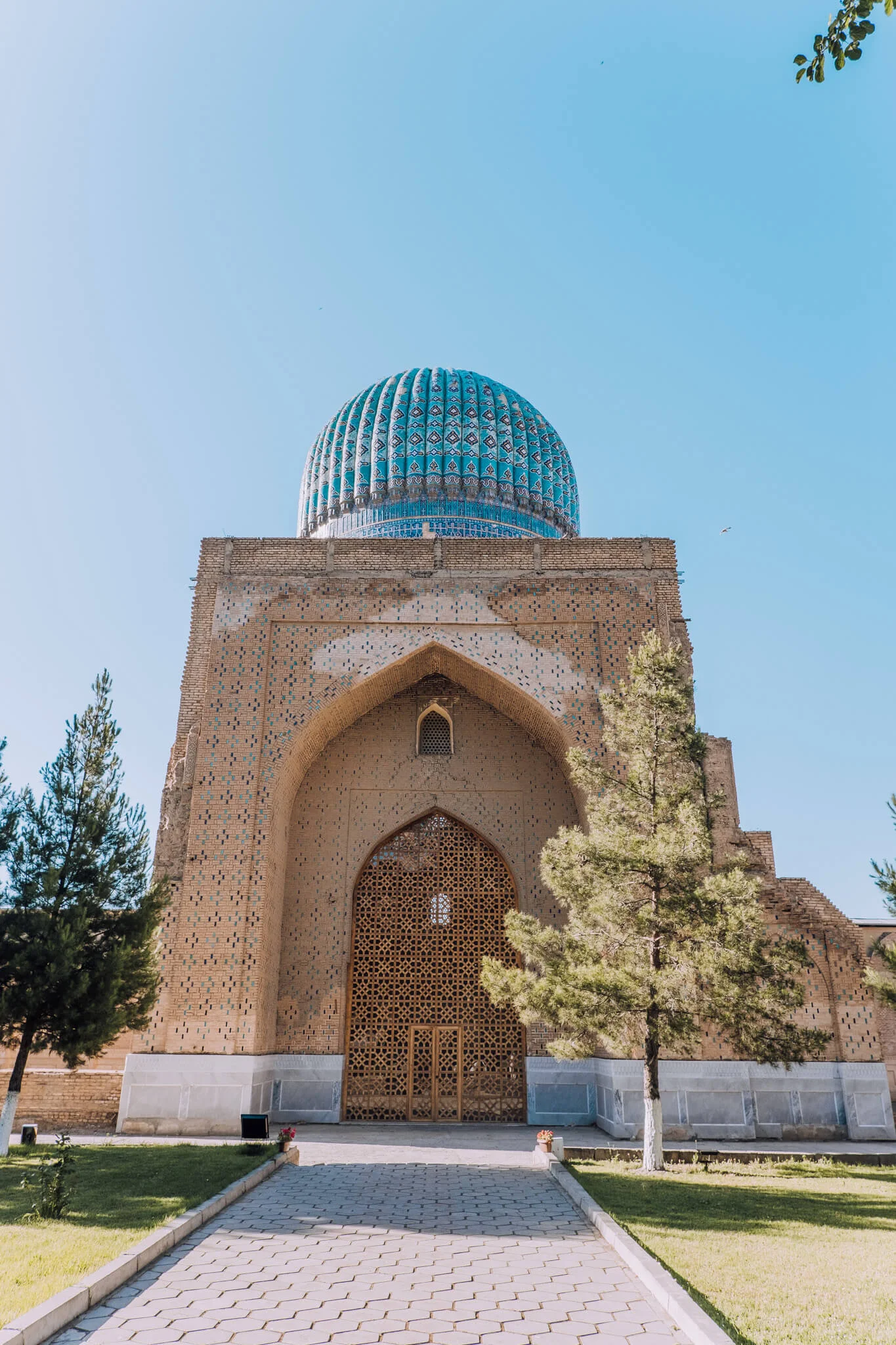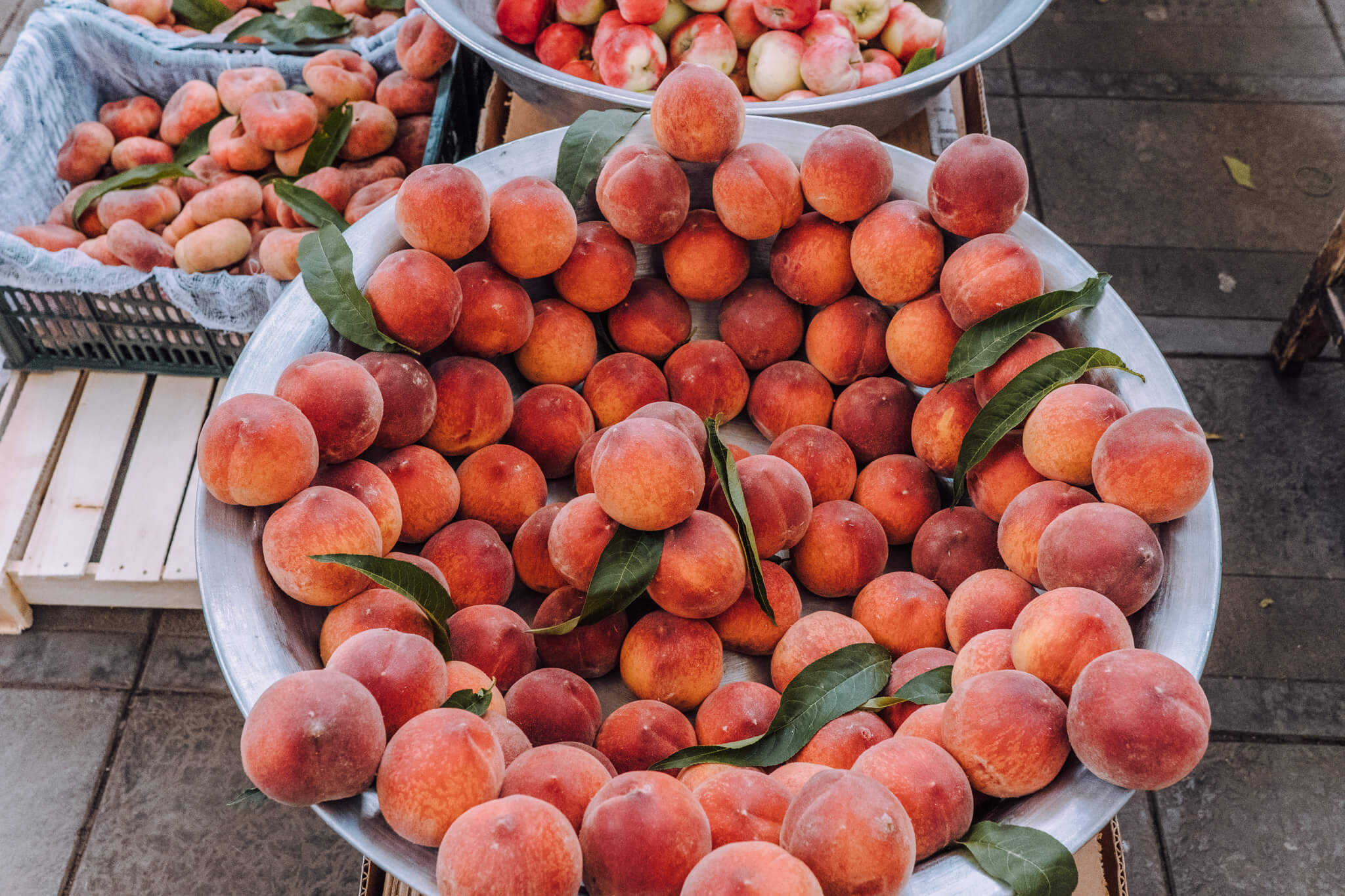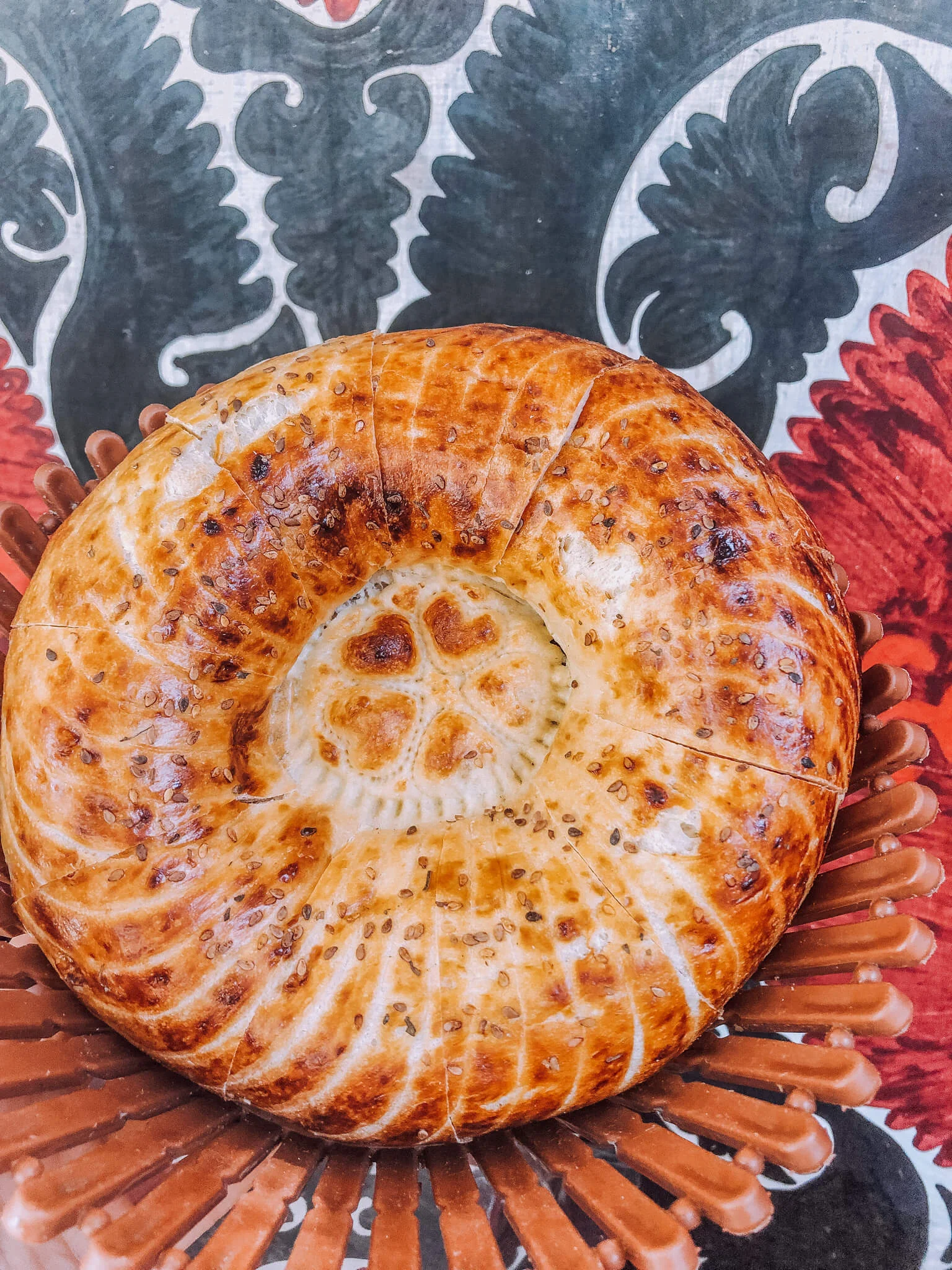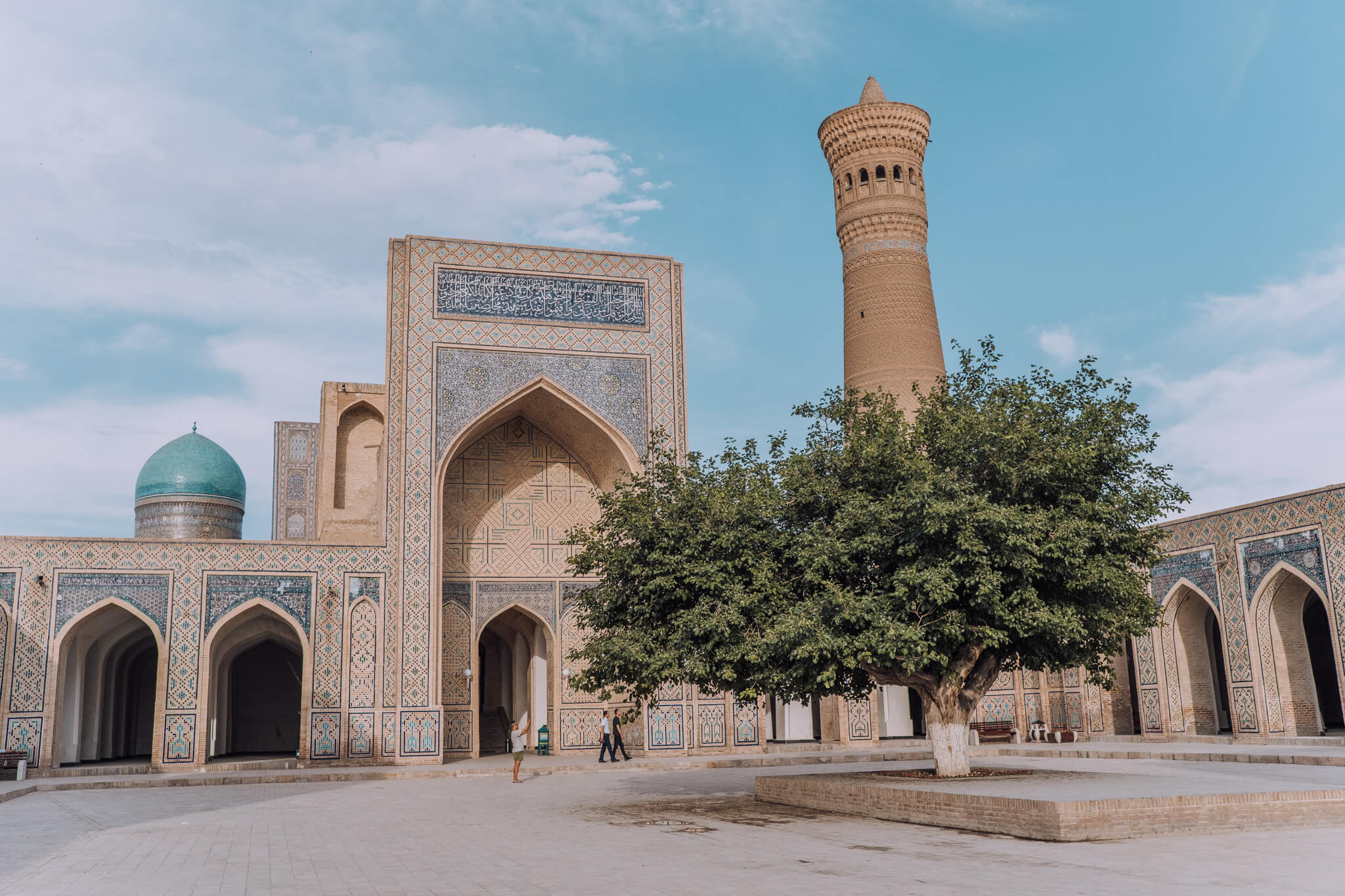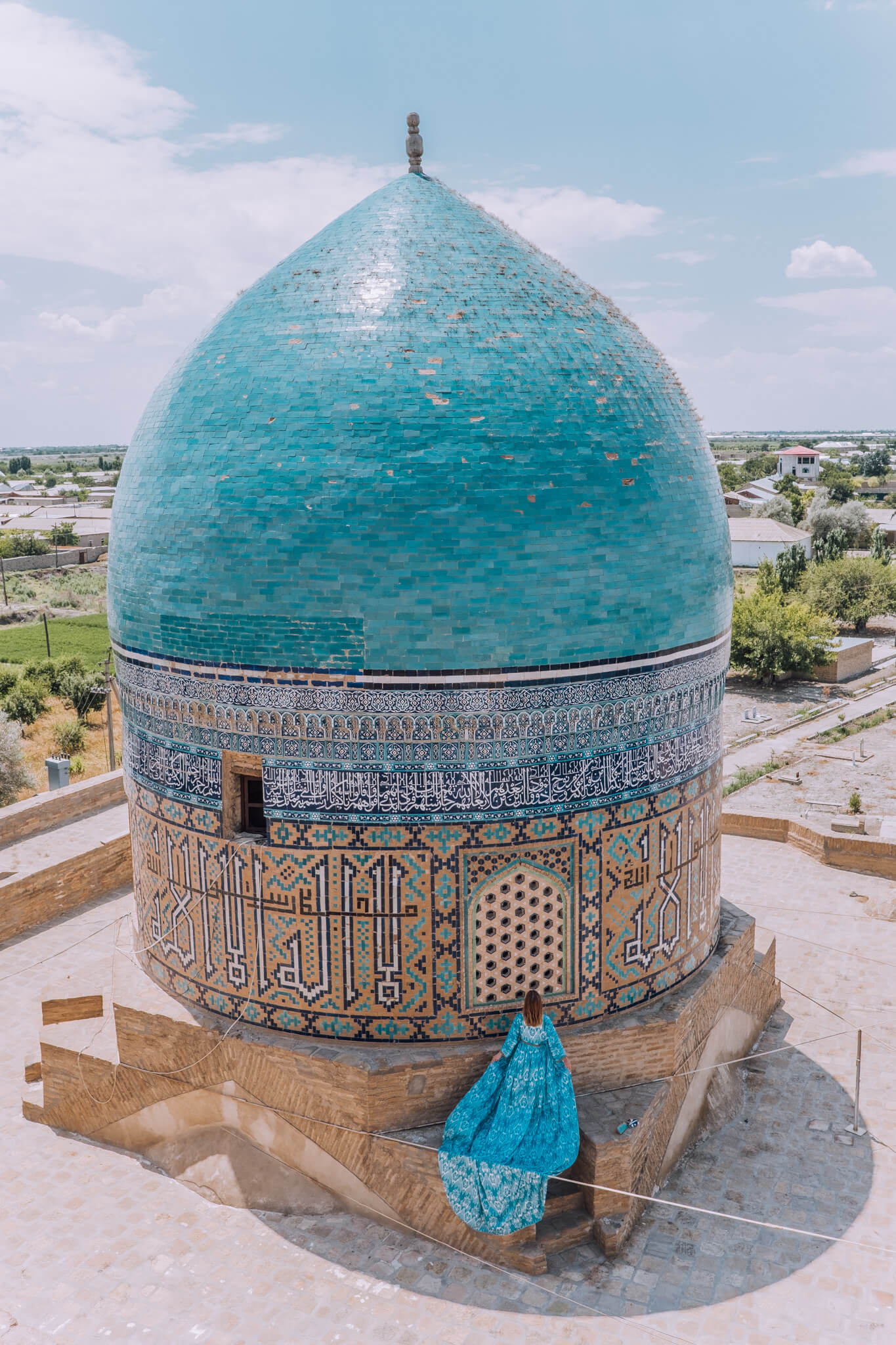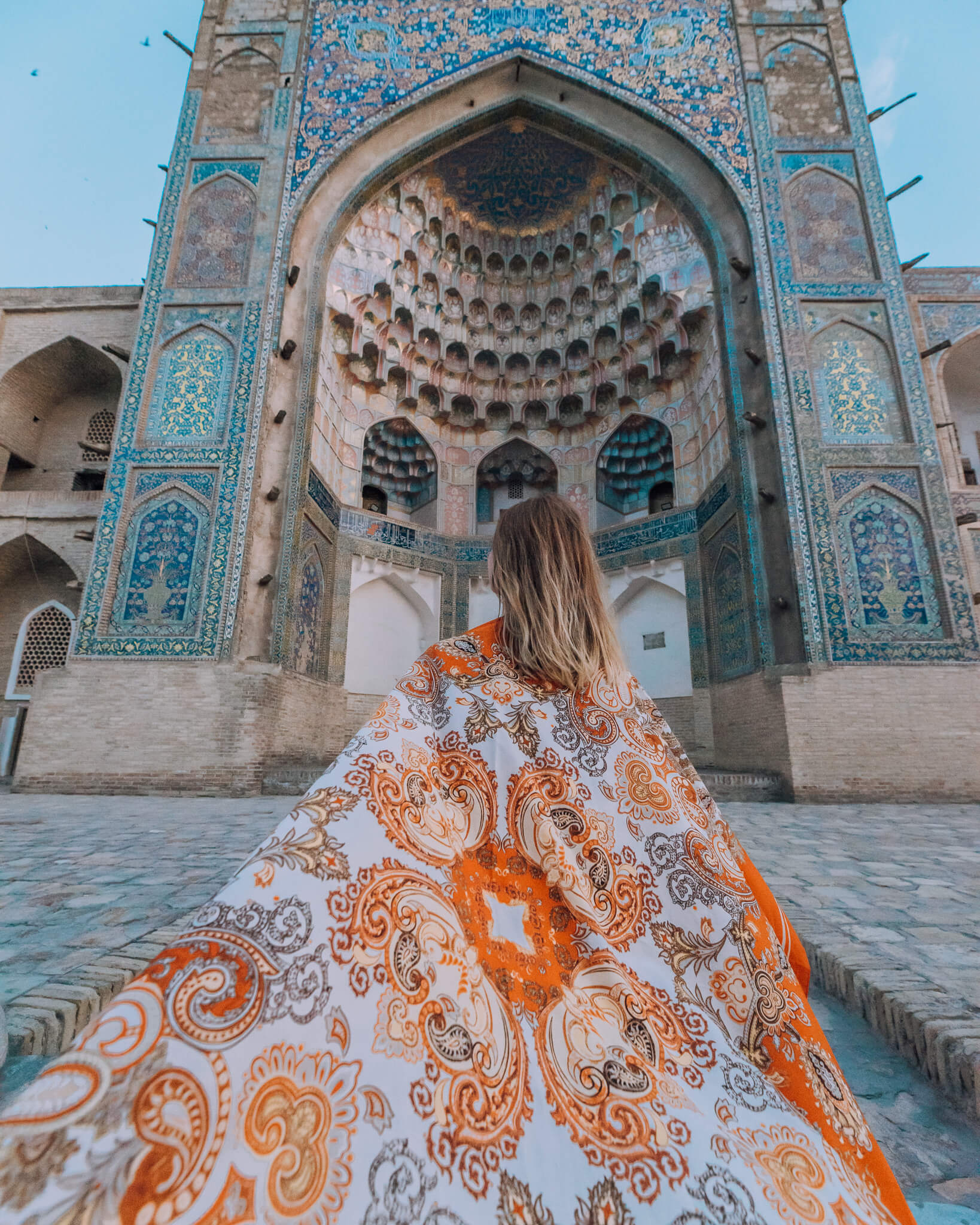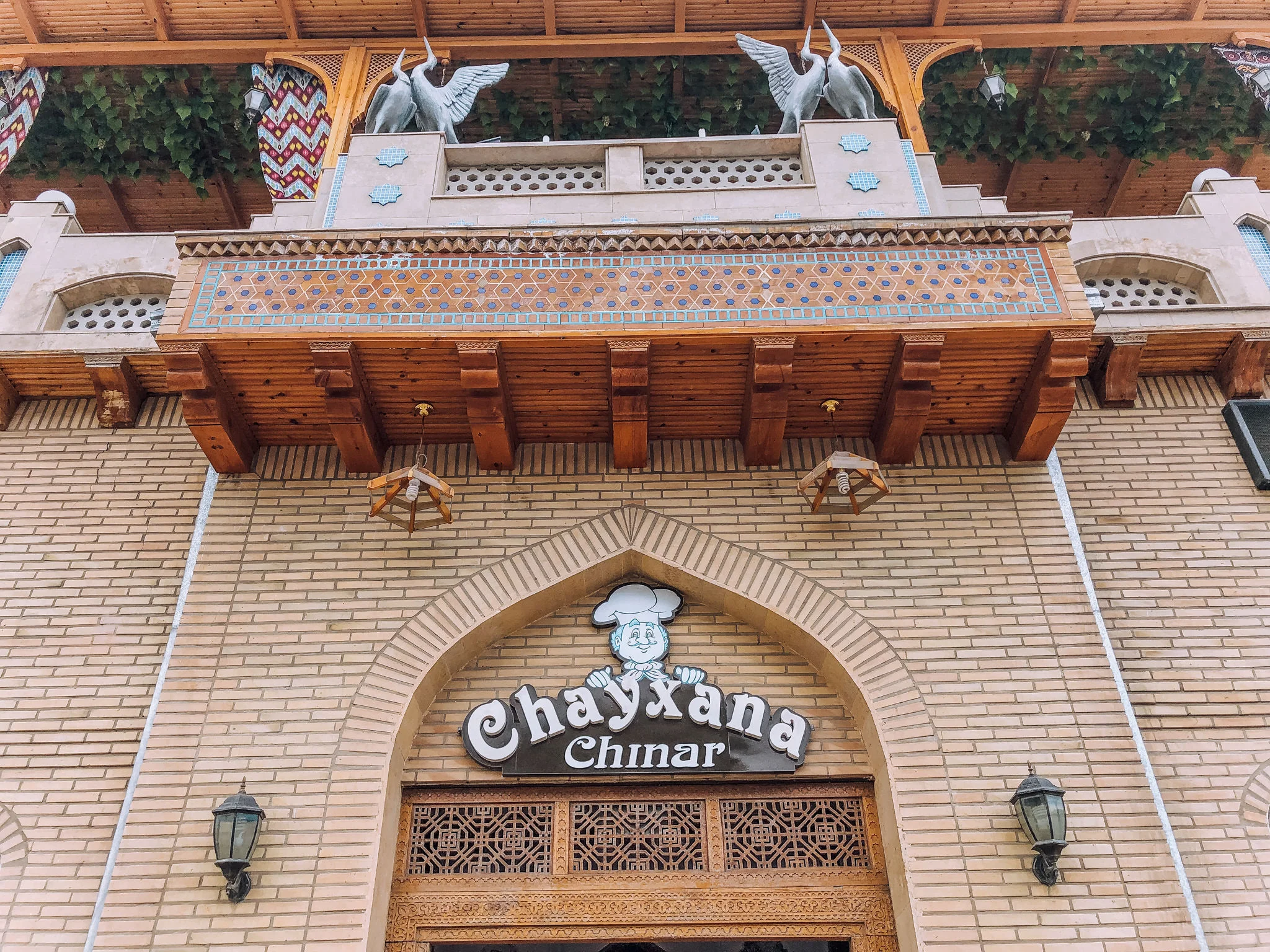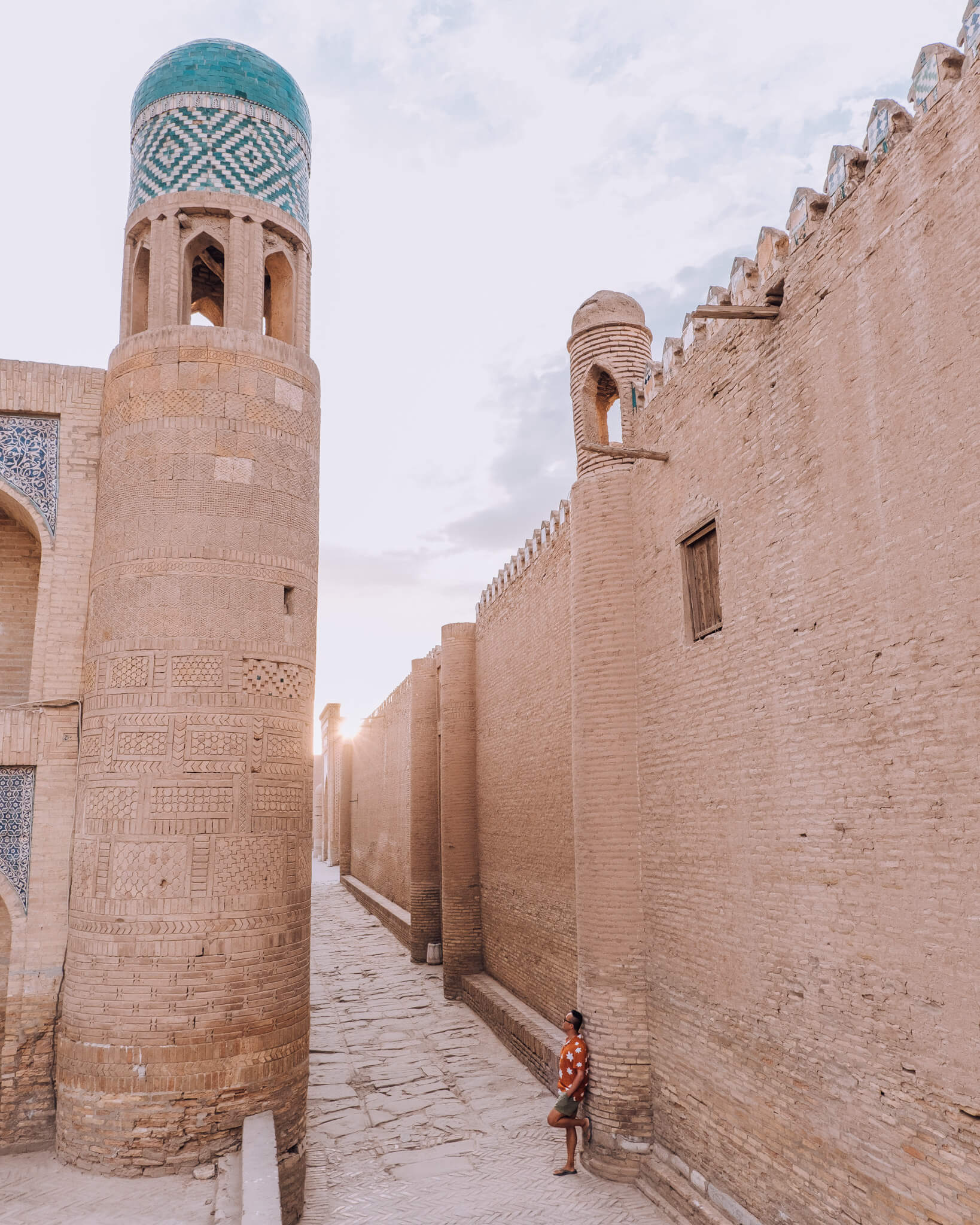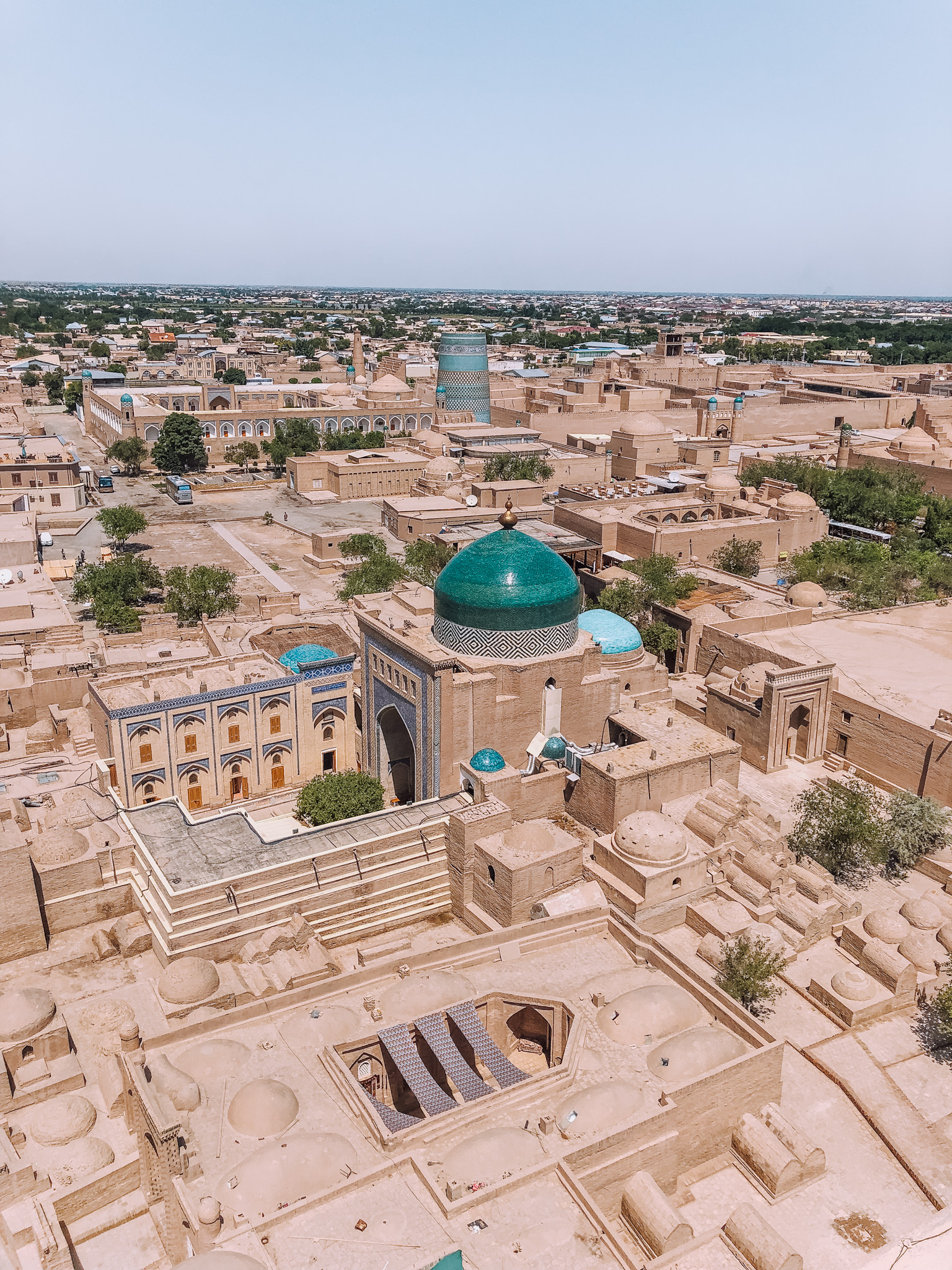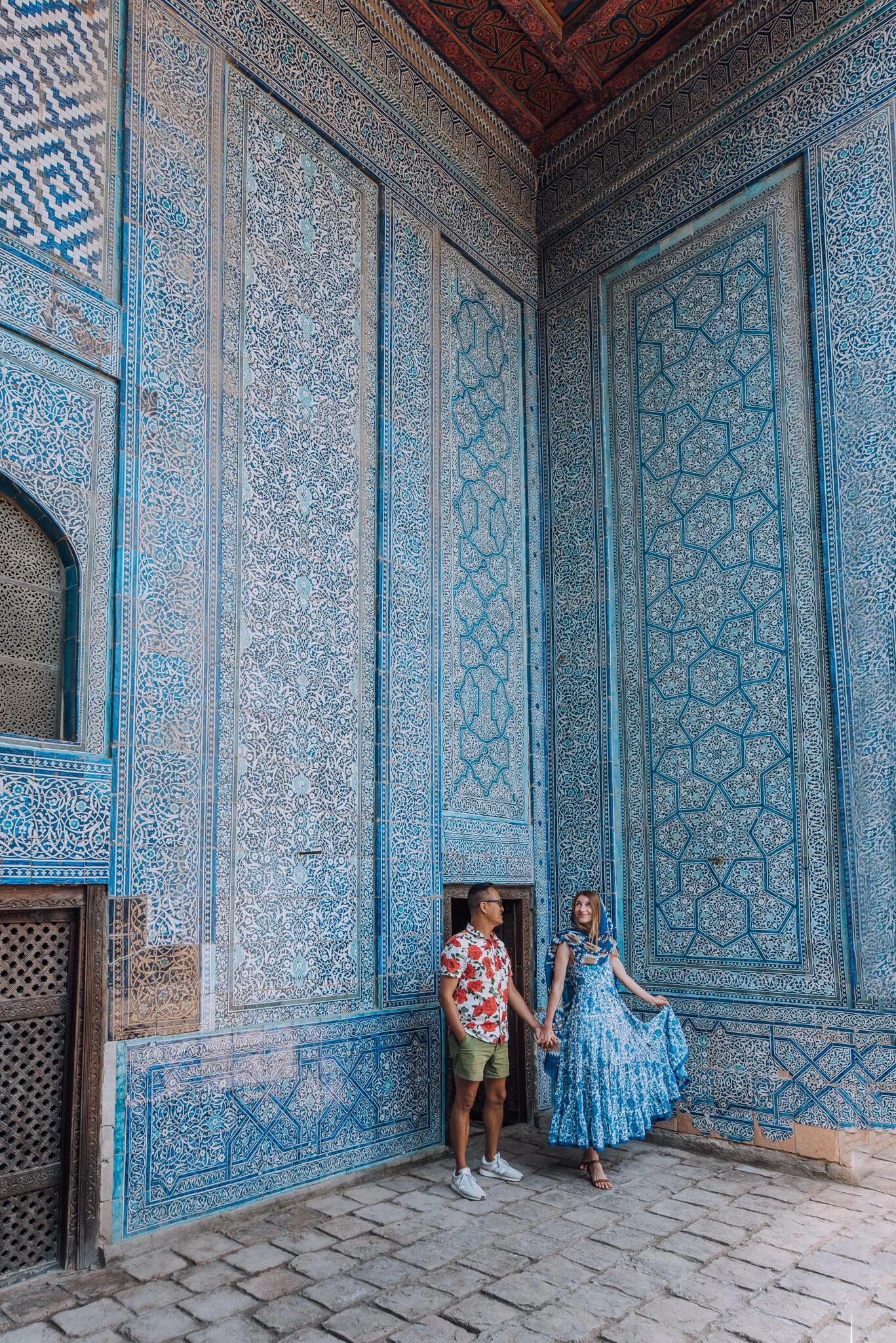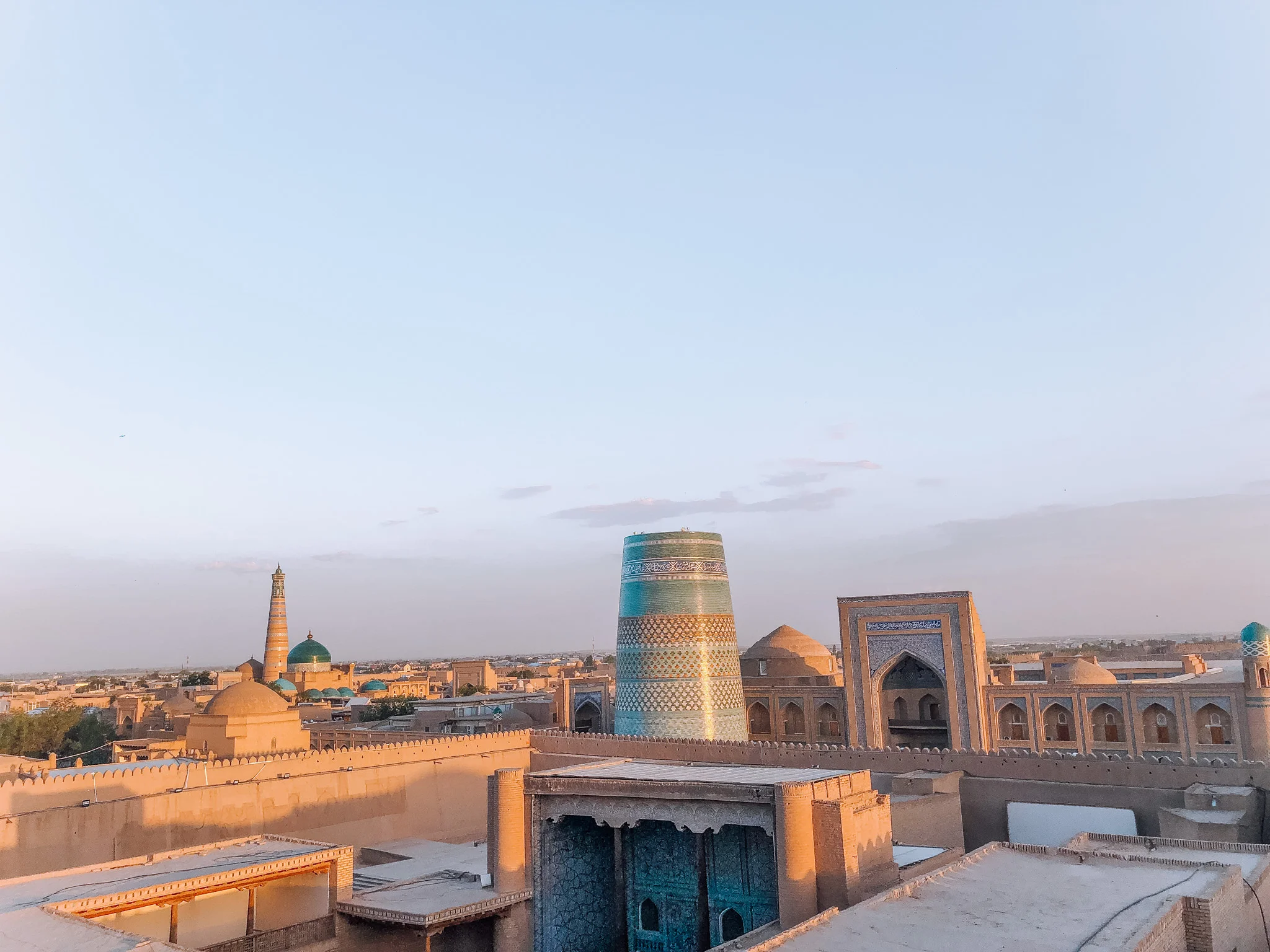Uzbekistan Guide and Itinerary
The Silk road loop
Whether you want to breeze through Uzbekistan or take your time to soak in the Silk Road sights, anywhere from a week to two weeks would be just right.
For us, we decided 10 days would be the right amount of time for us to leisurely explore each city. For those of you who have less time, you’d still be able to see everything albeit at a faster pace.
In the past, travel between cities consisted of slow, aging trains and cramped shared-taxi rides. Nowadays, Uzbekistan has modernized the train system so it’s now fast, cheap, and easy to get between most cities.
To get to Uzbekistan via plane, most people fly into either Tashkent (TAS) or Samarkand (SKD). Since we were more interested in Samarkand and wanted to land with the ball rolling, we flew directly into Samarkand. If you want to fly into Tashkent first, that’s totally fine too. In either scenarios, you’ll still have to do a loop. (Samarkand - Bukhara - Khiva - Tashkent - Samarkand) or (Tashkent - Samarkand - Bukhara - Khiva - Tashkent)
Interested in how much it costs to travel around Uzbekistan?
How about all our tips on how to successfully apply for a visa?
Samarkand
Samarkand! The name evokes romantic, timeless images of the Silk Road, harkening back to a bygone era of traders in dusty bazaars adorned in colorful robes and turbans while bartering their goods to anyone in shouting distance.
Throughout Samarkand’s storied history, it’s seen the likes of famous conquerors such as Alexander the Great and Genghis Khan and travelers such as Marco Polo.
Also, the geographical location meant it was the halfway point between Europe and Asia - imbuing the area with it’s alluring mix of Iranian, Mongolian, Indian, Turkish, and other East meets West touches.
Out of all the cities in Uzbekistan, Samarkand (UNESCO World Heritage city) has the biggest collection of restored buildings that showcase an impressive display of stunning mosaics, reliefs, tile work, and unique architecture. You’ll really feel like you’ve been whisked away back in time to a 101 Arabian Nights story.
How long to stay: 2-4 Days
Highlights
Registan
The crown jewel of Samarkand, Registan is a collection of madrasas (Islamic schools) that are covered with intricately designed tile work, mosaics, and Arabic letter work.
Back in it’s heyday, it was used as the main city square where you’d see anything from the bustle of daily markets, raucous public parades, and showy royal proclamations.
Given the highly desirable position halfway between Europe and Asia, the city became quite prosperous and attracted the attention of many. Scholars and travelers such as Marco Polo, Chinese scholar Faxian, and Moroccan adventurer Ibn Buttuta all wrote vividly about Registan while warriors such as Alexander the Great and Genghis Khan conquered the area.
The city really hit its peak in the 14th century though, when Timur decided to rebuild the city and hired artisans to apply the beautiful glazings and mosaics you see on the restored buildings today.
There are three large madrasas (Islamic schools) that make up Registan.
Ulugbek Madrassah, on the left side, was a school of science and philosophy. Construction was started in 1417 by Timur’s grandson Ulugh Bek, who was an astronomer and mathematician. At its peak, it was the intellectual hub of the whole region.
Sher Dor Madrassah, on the right, has some splendid, although locally controversial tiger figures in the tile work.
Tilla Kari Madrassah, in the center, has a wonderful frontage showing the double floor archways.
We thought the best time to visit was a couple hours before close since it would mostly be empty.
We noticed that the tour group swarms were gone, the vendors who set up shop inside the madrasas were gone, and the colors of the place during golden hour (right at sunset) were simply incredible. Also, right when the sun sets they light the whole place up like a Christmas tree.
You can go to the second floor of certain madrasas for a small fee. It makes for an incredible shot.
If you come in the morning, you can ‘bribe’ the guards to let you in an hour early.
Price: 30,000 som ($3.50), although with a ‘bribe/tip’ to the guards, you can enter before the official opening hours to have the place to yourself. In addition, if you want to go up to the second floor of the madrassas, you’ll have to pay one of the guards.
Shah-I-Zinda
Although Registan might be considered the darling of Samarkand, Shah-I-Zinda has more striking examples of the bright blue Muslim tilework on display. You’ll definitely be mesmerized as you walk down the main avenue by the flanking massive tombs covered with shimmering, azure tiles and designs - many of which house the resting places of the relatives of Timur.
At the end of the main avenue you’ll reach the resting place of Qusam Ibn-Abbas, a cousin of Mohammed, who supposedly brought Islam to the area. His tomb is a place of pilgrimage for many Uzbeks, so it’s important to be respectful here. In Persian “Shahki Zinda” translates to “The Living King”.
Price: 10,000 som ($1.10)
Bibi-Khanym Mosque
Just a short walk from Registan stands the towering and majestic Bibi Khanym Mosque, which was once one of the biggest mosques in the world.
Bibi Khanym, supposedly Timur’s favorite wife, started construction of the mosque in honor of Timur’s return from India.
It took five years to build the immense mosque but unfortunately, due to architectural lapses, it quickly began falling apart from the opening date. The mosque sat in disrepair and ruins until it was restored in late 1970’s by the Uzbekistan government, which is still ongoing today.
Make sure to check out the gigantic cupola at the main entrance.
Price: 21,000 som ($2.50)
Gur-e-Amir
Amir Timur, who was one of Central Asia’s most famous conquerors, lies here in rest. He was behind the great resurgence of Samarkand in the 14th century and is quite revered all over Uzbekistan. When you visit, you might see locals praying and giving their respects to his grave.
The mausoleum itself is a dazzling example of medieval architecture with ribbed domes, colorful mosaics, and azure glazed bricks. The reliefs on the dome resemble a starry sky, while the interior is gilded with semi precious stones. Definitely worth a visit!
Price 22,000 som ($2.40)
Siob Bazaar
The biggest market in Samarkand - we loved meandering through the sprawling mess of spice stalls and produce stands while the vendors called out to us to sample their fares. Luckily, when we were visiting, it was the height of cherry season and we were able to score 1 kg (2.2 lbs) of super plump cherries for only $3 USD! You can also find anything else you need like microwaves, costumes, computer parts, wigs, etc. :)
Where To Eat
Bibikhanum Teahouse
Since this cute, airy restaurant was near our hotel, we ended up eating almost every meal here. The service is friendly and the food was well cooked. What more can you ask for?
Like most restaurants in Uzbekistan, you’ll be eating things like Plov, dumplings with sour cream, chicken shashlik kebabs, some kind of salad, and freshly baked bread. Luckily they do all of those things well here!
We wrote a great guide on the food of Uzbekistan, if you’re interested.
They also have a fountain in the front that you’re welcome to dip your legs into, which is a godsend after a long day of walking!
Where To Stay
Tilyakori Hotel
Good location right next to Registan and well priced - $40/night
Trip.LE Guest House
Run by a family, this guest house has a homey feel and is about a 15 minute walk to Registan - $30/night
Guesthouse Timur The Great
Great location near Bibi Khanym Mosque. $35/night
Rabat Boutique Hotel
Great location near Registan with highly decorated interiors and rooms. The price is a bit higher for the ambiance. $70/night
Bukhara
Another key stop along the Silk Road, Bukhara is considered to be one of the holiest and oldest standing cities in Central Asia.
Like other cities in Uzbekistan, Bukhara features many examples of Turkish Islamic architecture with its decorated minarets, colorful mosques, and tiled madrasas. Some of these madrasas still train clergy to this day.
There has been some intense restoration by the government recently, but the city still retains it’s authentic charm.
You’ll find it’s meandering alleyways, cobbled pathways, and charming restaurants a great place to get lost in.
How long to stay: 2-3 Days
Highlights
Kalon Mosque
One of the most peaceful and tranquil places in Bukhara, this mosque is still used as a place of worship on certain days. As a result, it’s also one of the few places not overrun by souvenir stalls and vendors inside. Make sure to come near sunset to enjoy the colors and swirling birds overhead.
Fee: 7,000 som ($0.90), valid for two days.
Kalon Minaret
It’s said that Genghis Khan was so taken by the beauty of the Kalon Minaret, that he spared it from destruction, while the rest of the city was razed to the ground.
The minaret is covered with intricate brick patterns that some say was later copied in Venice while designing Doge’s Palace.
There are stairs you can take to the top for a spectacular view of the city.
In a bit of dark streak of history, many past rulers used the Kalon Minaret/Tower as a method of execution by throwing them off the parapet.
Chor Bakr Memorial Complex
Just a short drive from the city center of Bukhara lies the Chor Bakr Memorial Complex, also called the ‘City of the Dead’ by the locals.
Four family members who were direct descendants of Muhammad are buried here. They each had titles of ‘Bakr’ or ‘Brother’ - so Chor-Bakr translate to ‘Four Brothers’.
There is also a gigantic, blue dome on top of one of the structures, where you can pay one of the guards a small fee to climb to the top for closer viewing.
Nadir Divan-Begi Madrasah
This madrassa was named after Vizier Nadir, who ruled Bukhara from 1611-1642. There are some birds, animals, and a sun used in decorating the madrassa, which was rare for the time. The front facing area has been very well restored and makes for some fantastic photography.
Abdulaziz Khan Madrassah
This madrassa, facing opposite of Ulugbek Madrassah, are full of souvenir shops but still are quite photogenic and worth a visit. The entryway is full of colorful and faceted ornamental stalactites.
Bolo Hauz Mosque
After visiting the Ark, Bukhara’s whitewashed fortress, make sure to drop by the Bolo Hauz Mosque. They have some beautiful ceilings in the entry area that is free to view.
Chor Minor
This unusual, four spired madrassa is right behind Lyabi Khauz. Each tower is decorated differently from the other while three of them are used for storage, the last one has stairs leading to the top floor. When we visited, it was unmanned and it didn’t seem like there was a way to enter.
And just across from Chor Minor, there is a great vintage shop selling all sorts of Soviet trinkets, memorabilia, and collectibles.
Where To Eat
Chayxana Chinar
One of our favorite restaurants in all of Uzbekistan, this place was consistently filled with locals and tourists alike. I really appreciated that the chicken shashlik was grilled with full bone-in pieces and cooked with a nice char.
Mavrigri Restaurant
We loved the interior courtyard here. It was extremely peaceful and chill along with your standard Uzbek fare of plov, shashlik, and salad.
Chasmai Mirob Restaurant
The main reason to come here is for the spectacular view of the Kalon Mosque, Minaret, and Mir-i-Arab Madrasa at sunset. Make sure to arrive early since most of the best tables will be taken well before sunset.
Where To Stay
Hotel Volida Boutique
Fantastic staff, clean rooms, and a quiet location. $45/night
Hotel Fatima Boutique
Great location near the main fountain. $45/night
Amulet Hotel
Beautiful interior inside a restored 19th century building. $65/night
Komil Boutique Hotel
Highly decorated interiors and a short walk to the main walking area. $65/night
Khiva
This UNESCO World Heritage site sometimes gets passed over in favor of its more famous siblings Samarkand and Bukhara and as a result feels less crowded.
You can spend each day wandering amongst the twisting alleyways while gleaming blue mosaics and minarets keep appearing out of nowhere.
As of June 2019, they’ve started to implement a city-wide ticket as opposed to each sight charging a fee. It’s a bit steep at 100,000 Som ($12 USD) and forces you to cram all the sights into one day. We wish they had retained the per-sight fee like Bukhara and Samarkand, but that’s how the cookie crumbles in Khiva!
How long to stay: 1-3 Days
Highlights
Tash Hauli
One of the best examples of secular Asian 19th century architecture, there are some beautiful concubine and harem rooms on display. If you want to get some photographs of the entry ways of each, try to get there right at open before the vendors have set up shop.
Kalta Minor
One of the most striking minarets in Khiva, the Kalta Minor has a very wide foundation for stability and is covered from top to bottom with striking blue tilework. Some people say it resembles a large glazed barrel with it’s original height targeted at around 90 meters. Construction was only finished a third of the way through with the name Kalta Minor translating to ‘short minaret’.
Muhammad Aminkhan Madrasah
Located right behind the iconic Kalta Minor, this is one of the largest madrasahs in Central Asia. At it’s peak, it was one of the richest educational institutions in the land. Awkwardly, the madrasah is now mainly comprised of a hotel, currency exchange, and tour agency.
Kuhna Ark
The Khiva rulers personal fortress which comprises of the harem, mint, barracks, mosque, jail, and arsenal is a sprawling area to get lost in. Most people come here though to get up to the Watch Tower for a stunning view of city at sunset.
Islam-Hoja Minaret
Built in 1908 by Islam-Hoja, the tapered shape is more slender and strong than older minarets. With your city wide ticket, you can climb up this minaret. The staircase is quite narrow and you’ll be on all fours but it’s worth the view from the top!
Where To Eat
Cafe Zarafshon
With an excellent location next to Islam Khoja Minaret, make sure to come here for dinner when you can dine outside next to the lit up minaret.
Terrassa Cafe
With perhaps the best rooftop views of any restaurant in town, this place quickly fills up so make sure to arrive early. The food here is priced a bit higher than other places but is pretty good as well. Make sure to try to lagman noodles.
Where To Stay
Zukhro Boutique Hotel
Incredible views from the rooftop terrace, great location $45/night
Arkanchi Hotel
Great location along with a beautiful rooftop terrace. Also has a sauna. $60.night
Guest House Orzu
Friendly staff - a nice budget option. $30/night
Euro-Asia
Good, quiet location with friendly staff $50/night
Orient Star Khiva Hotel
Located inside a madrasa, this is more of a historical stay and priced higher. $120/night
some other articles you might LIKE:
How Much It Costs To Travel Around Uzbekistan


